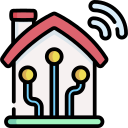AI-Driven Climate Control Systems
AI-driven climate control systems represent the latest advancement in managing indoor and outdoor environments for optimal comfort, efficiency, and sustainability. By leveraging artificial intelligence, these systems automate temperature, humidity, and airflow adjustments to adapt dynamically to ever-changing conditions. As buildings and cities seek smarter, greener solutions, AI-infused climate control becomes essential for reducing energy usage, enhancing occupant well-being, and minimizing environmental impact. Explore how AI is revolutionizing climate control systems across various dimensions and transforming our relationship with built environments.
Intelligent Automation in Climate Management
AI-based climate control systems employ advanced sensor networks to monitor multiple factors such as temperature, humidity, CO2 levels, and occupancy in real time. These sensors feed continuous streams of data to machine learning models, which instantly analyze and respond to changes in the environment. For example, if several people enter a conference room, the system detects the increased heat and carbon dioxide levels, automatically adjusting the HVAC settings to maintain air quality and comfort. This real-time responsiveness ensures that environmental conditions remain optimal without the need for manual oversight.
One of the defining features of AI-driven climate control is the use of adaptive learning algorithms. Over time, these systems analyze historical data to refine their operation, recognizing patterns such as daily usage trends, seasonal shifts, and unique occupant preferences. By learning from this data, the AI improves its predictive capabilities, anticipating needs before they arise. For instance, it might pre-cool a room ahead of a scheduled meeting or adjust airflow for areas that typically receive more sunlight. This adaptive intelligence results in more accurate and efficient climate management, contributing to both cost savings and sustainability.
The incorporation of remote and predictive control transforms how users interact with climate systems. AI-driven solutions can be managed from smartphones or centralized dashboards, offering insights and recommendations for further optimization. Furthermore, predictive models assess upcoming weather forecasts, energy pricing data, and occupancy schedules to proactively adjust climate settings. This foresight allows the system to prepare indoor environments for expected changes, reducing energy waste and improving comfort even when someone is not on-site to make manual adjustments.


AI-driven climate control systems take personalization to the next level by recognizing individual preferences and adapting accordingly. Users can set their comfort profiles, specifying preferred temperature ranges, humidity levels, or even lighting moods. The system learns these preferences over time and automatically adjusts whenever a particular user is detected in a space, using data from wearables or entry badges if available. In multi-occupant environments, the AI mediates between differing preferences for a balanced solution, ensuring a harmonious yet individualized indoor climate that boosts comfort and productivity.
